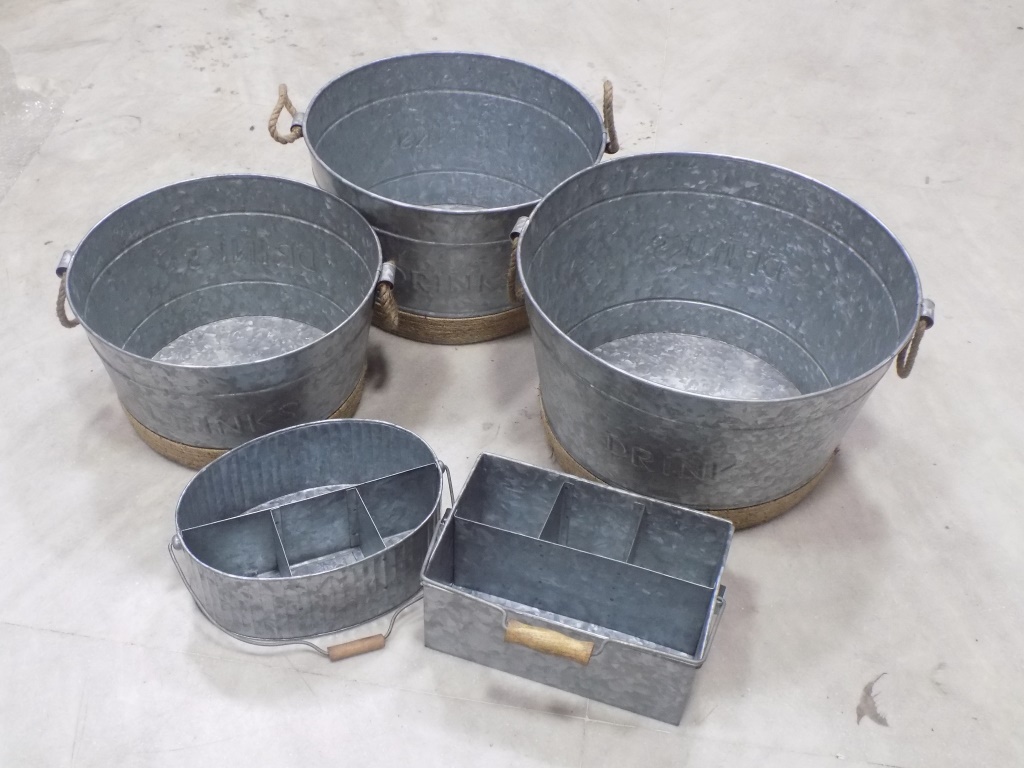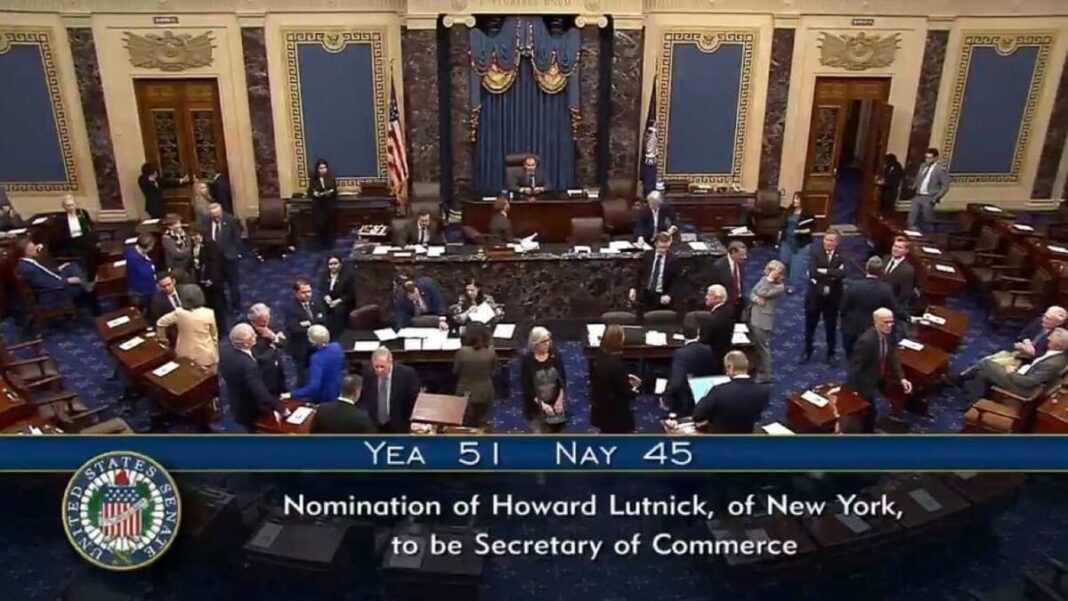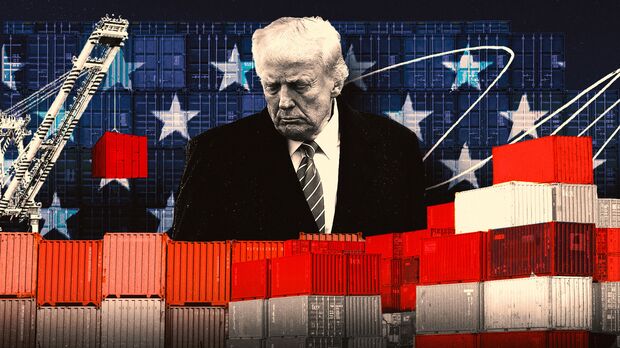BENGALURU, India (AP) — Rows of small factories line the streets of a dusty suburb in Bengaluru, where workers weld and cast Indian-made steel into everything from car parts to kitchen sinks. Here, U.S. President Trump’s announcement to impose high trade tariffs on steel imports has some unexpected supporters.
Many industry workers and experts expect that the result of tariffs will be that cheap steel gets dumped in places like India. That’s because the announced 25% tariff will make it too expensive for many companies in countries like China and South Korea to keep exporting to the U.S.
A worker lifts a steel sheet after cutting it in a specific design at a factory in a suburb of Bengaluru, India, Thursday, Feb. 27, 2025. (AP Photo/Aijaz Rahi)
A worker lifts a steel sheet after cutting it in a specific design at a factory in a suburb of Bengaluru, India, Thursday, Feb. 27, 2025. (AP Photo/Aijaz Rahi)
For B. Praveen of Sun Techpro Engineering, which makes products from steel metal sheets, it means his “wafer-thin” profit margins will probably grow as the steel he buys gets cheaper.
“For thousands of companies like mine, this can be a good thing,” he said. Businesses such as Praveen’s employ over 200 million Indians and are key drivers of India’s economy.
But cheaper steel in India isn’t good for everyone. In February Naveen Jindal, the president of the Indian Steel Association, which represents all India’s steelmakers, said that he was “deeply concerned,” especially since “India is one of the few major markets without any trade restrictions,” making it a target for potential steel dumping. And the increased competition could impact efforts by India to produce its own steel more cleanly. The current production of most Indian steel releases high levels of greenhouse gas emissions, which cause climate change. Reduction efforts could be cut in the interest of keeping profits up.
India’s steel industry is big and dirty — and is set to keep growing A worker carries steel waste at a factory in a suburb of Bengaluru, India, Thursday, Feb. 27, 2025. (AP Photo/Aijaz Rahi)
A worker carries steel waste at a factory in a suburb of Bengaluru, India, Thursday, Feb. 27, 2025. (AP Photo/Aijaz Rahi)
India is the world’s most populous nation and one of the fastest-growing major economies. Steel demand is rising rapidly due to fast-paced urbanization, infrastructure, and industrial growth, and the government expects steel production to increase from 120 million tons to 300 million tons in the next five years.
Currently, up to 12% of India’s greenhouse gas emissions come from steelmaking according to the Global Energy Monitor, an organization that tracks energy projects around the globe. It found this could likely double in five years if more steel is produced as per the government’s plans.
Henna Khadeeja, a research analyst with GEM, explained that unlike China, Europe, or the United States, Indian steelmakers still mostly use coal-based blast furnaces to make steel, which are more high-emitting. In September last year, the Indian government said it would invest $1.72 billion to help the steel industry transition to cleaner methods of steelmaking.
But Khadeeja said all the new steel expansion plans that have been announced are for coal-based steel production facilities. “Right now, the focus is mostly on producing as much steel as possible. The strategy is mostly to retroactively decarbonize the steel once the capacity is built in place,” she said.
Cleaning up steel is vital for India’s future A worker welds a part made from steel sheets at a factory in a suburb of Bengaluru, India, Thursday, Feb. 27, 2025. (AP Photo/Aijaz Rahi)
A worker welds a part made from steel sheets at a factory in a suburb of Bengaluru, India, Thursday, Feb. 27, 2025. (AP Photo/Aijaz Rahi)
Building more coal-based blast furnaces make it more difficult for India to export its steel in the future, particularly to Europe, said Easwaran Narassimhan of the New Delhi-based think tank Sustainable Futures Collaborative. The European Carbon Border Adjustment Mechanism, a tax on carbon emissions that Europe will begin charging for all products imported to the bloc from next year, would likely turn off any buyers from steel made with coal-based blast furnaces.
“China’s steel production is less emissions-intensive, which means it’s going to face a lesser impact from European carbon taxes,” said Narassimhan. “Any amount of short-term pain today is going to be worth in the long run.”
India too has ambitious climate goals and wants to produce 500 gigawatts of clean power — enough to power nearly 300 million Indian homes — by the end of this decade. The South Asian nation recently crossed the milestone of installing 100 gigawatts of solar power, most of which was installed in the last 10 years.
Workers use machines to finish the steel products manufactured at a factory in a suburb of Bengaluru, India, Thursday, Feb. 27, 2025. (AP Photo/Aijaz Rahi)
Workers use machines to finish the steel products manufactured at a factory in a suburb of Bengaluru, India, Thursday, Feb. 27, 2025. (AP Photo/Aijaz Rahi)
India also aims to go net zero — that is to stop adding planet-warming gas to the atmosphere, either by preventing the emissions in the first place or removing an equivalent amount through natural or technological means — by 2070.
Indian steelmakers said they recognize the need to emit less but are apprehensive about how much it’ll cost them. “If you’re not financially viable, you cannot exist as a business,” said Prabodh Acharya, chief sustainability officer at JSW Group, one of India’s biggest steel companies.
“Steel is essential for the growth of society and economy. We need to find the right balance between growth, economy and decarbonization,” he said.
___A previous version of this report incorrectly gave the name of Sustainable Futures Collaborative as Sustainable Futures Collective.
___Follow Sibi Arasu on X at @sibi123
___The Associated Press’ climate and environmental coverage receives financial support from multiple private foundations. AP is solely responsible for all content. Find AP’s standards for working with philanthropies, a list of supporters and funded coverage areas at AP.org.





